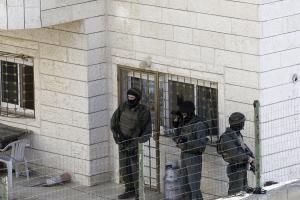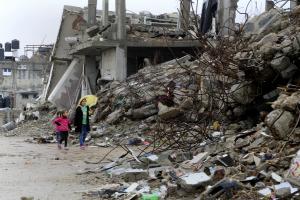Federal Employees are Covered by Two Pension Plans Plus Social Security; Most Private Sector Retirees Who Fund Those Plans Have Only Social Security to Rely On

The average federal pension pays $32,824 annually. The average state and local government pension pays $24,373, Census data show. The average military pension is $22,492. ExxonMobil, which has one of the best remaining private pensions, pays an average of $18,250 per retiree, Labor Department filings show. "Government pensions are vastly more generous than those in the private sector," says economist Veronique de Rugy of the market-oriented Mercatus Center. "It's no coincidence that if there is a good plan, it's available to federal employees rather than in the private sector." More than 21,000 retired federal workers receive lifetime government pensions of $100,000 or more per year, a USA TODAY/Gannett analysis finds. The six-figure pensions spread across a broad swath of the federal workforce: doctors, budget analysts, accountants, public relations specialists and human resource managers. Most do not get Social Security benefits. Retired law enforcement is the most common profession receiving $100,000-plus pensions, including 326 Drug Enforcement Administration agents, 237 IRS investigators and 186 FBI agents. The Postal Service has 714 retired workers getting six-figure retirements. The Social Security Administration has 444. A retired Smithsonian zoologist has a $162,000 annual lifetime pension. The six $200,000-plus pensions include a doctor, a dentist and a credit union regulator, plus three retirees whose occupations weren't listed. The federal government has two retirement systems: one for those hired before 1984 and another for those hired after. Under the older system, employees did not participate in Social Security. The older system covers 78% of current retirees and accounts for 96% of six-figure pensions. All federal retirees receive health benefits. [2012 Source]
The Federal Employees Retirement System has three elements: (1) Social Security, (2) the FERS basic retirement annuity and FERS supplement, and (3) the Thrift Savings Plan (TSP).
In the FERS, government employees contribute 0.8 percent of pay while U.S. taxpayers put in 11 percent (federal employees who enroll in FERS beginning in 2014 are required to contribute 4.4 percent of their pay toward their defined benefit plan, up 0.8 percent for federal employees who joined government service before that date).
Federal employees who don't invest in the TSP still get a 1 percent contribution from U.S. taxpayers. The first 3% of pay contributed by a federal employee to TSP is matched dollar-for-dollar by U.S. taxpayers, and the next 2% of pay is matched by U.S. taxpayers at the rate of 50 cents on the dollar. TSP has the lowest administrative fees in the business and is the only 401k plan account that offers stocks, bonds and super-safe, never-have-a-bad-day Treasury securities in the G-fund. TSP, used by millions of federal workers, charged an average expense ratio of a mere 0.03% in 2013.
To summarize, in addition to their generous federal pensions funded by U.S. taxpayers, federal employees have a generous financial match from U.S. taxpayers for their TSP, the government equivalent of a 401k plan.
Many, if not most, private employers don't provide any match to employee 401k plans. If they do, it is typically at the rate of 50 cents on the dollar on only the first 3 percent. It is unusual for the employer to match contributions at the 5 percent level of the federal TSP (and no private employer contributes 1 percent if the employee chooses not to participate, unlike the 1 percent U.S. taxpayers contribute to the TSPs of non-participating federal employees). In addition, IRAs or employer-sponsored 401(k)s in the private sector typically charge more than 10 times the amount charged in administrative fees for federal TSP.

How Generous Are Federal Employee Pensions?
September 30, 2011American Enterprise Institute - USA Today reports that “retirement programs for former federal workers—civilian and military—are growing so fast they now face a multitrillion-dollar shortfall nearly as big as Social Security’s.” USA Today’s figures include both pension and retiree health costs and are inclusive of military programs, so it is a broad figure. Nevertheless, it raises an interesting question: how did retirement costs for a small segment of the population grow to rival Social Security, a program designed to cover nearly all Americans? One big reason is that federal pension benefits are simply very generous relative to typical private sector plans.
How generous? To check, I took a stylized worker and ran his annual salary through both the federal pension programs and a typical plan offered to private sector employees to see the difference in how much they would end up with at retirement.
Since federal workers receive higher salaries than the average private sector worker (more on that here) I assumed the employee earned 150 percent of the average wage each year; that would put his earnings this year at a bit over $60,000. I assumed he entered the workforce at age 21 and worked until age 65; in reality, most people take some time out of the workforce and most federal employees have held other jobs, but for these purposes that doesn’t matter too much.
Most current federal employees are covered by two pension plans (most private sector workers don't even have one): a defined benefit (DB) program known as the Federal Employees Retirement System (FERS) and a defined contribution (DC) program called the Thrift Savings Plan (TSP). For a federal employee who retires at age 62 or older and has 20 or more years of service, his basic FERS benefit will equal 1.1 percent of his highest 3 years of average earnings, multiplied by his years of service.
For FERS, most federal employees contribute 0.85 percent of pay, with the remaining costs covered by U.S. taxpayers.
The Thrift Savings Plan functions similarly to a private sector 401(k) plan. U.S. taxpayers contribute 1 percent of worker wages to the TSP regardless of whether individuals participate. In addition, the U.S. taxpayers matches employee contributions $1.00 per $1.00 for the first 3 percent of earnings contributed and $.50 per $1.00 for the next 2 percent of earnings. A federal employee contributing 5 percent of earnings to the TSP would receive a total employer contribution of 5 percent of earnings. Most current federal employees also participate in the Social Security program.
In the private sector, a typical pension plan today is a defined contribution 401(k) program, which is generally funded with a combination of worker contributions and employer matches. The most common matching formula is $.50 per $1.00 of contributions, up to the first 6 percent of pay (but that figure is dropping). Around one-third of employers offering matching 401(k) plans use this approach, so we’ll follow it here.
DB plans still exist in the private sector, but they’re shrinking fast: only 13 of the Fortune 100 companies now offer a traditional DB plan to newly hired employees. Some offer so-called “hybrid plans”—which are themselves shrinking—while the remainder offer 401(k) plans.
For both 401(k)s and the TSP, we need to make the risk of the benefits they offer comparable to the guaranteed benefits from a defined benefit plan; otherwise, investments in riskier assets like stocks will seem like “free money.” To do that, I follow the Congressional Budget Office’s approach of assuming that DC plans invest in government bonds, which I assume to have a 4 percent yield. That’s higher than the roughly 2.5 percent Treasury securities are currently paying but lower than the historical average, so you can adjust up or down as you see fit. Once people retire, I convert their DC accounts to a joint and survivor annuity using rates published by the TSP. For both workers, I assume they contribute enough to receive the maximum employer match to their DC account; but in comparing benefits I use only those generated by the employer match, not from the worker’s own contributions.
In both federal and private sector employment the worker would receive the same annual Social Security benefit of around $21,656.
At retirement, the federal worker’s highest three years of earnings average at $60,368; with an assumed 44 years of service (42% of federal workers retire between the ages of 55 and 59 with an average of 34.8 years of service) and a 1.1 percent replacement factor, that generates an annual FERS pension of $29,218. In addition, the annuitized value of the employer match to the TSP generates another $6,960 in annual benefits, for a total retirement income of $57,834. In addition, the federal employee would have whatever income his own TSP contributions generated.
The private sector worker would have a Social Security benefit of around $21,656, plus an annuity payment drawn from his employer’s 401(k) contributions of around $4,175 per year. The total retirement income would be around $25,832, plus whatever he received through his own 401(k) contributions. To make things simple, $25,832/$57,834 = around 45 percent, so the private sector worker clearly is receiving far less.
Now, we can haggle about some of these assumptions. Maybe private sector workers who are comparable to federal workers in terms of education or other skills receive more generous pensions. But even if we assume that the employer matches 6 percent of pay rather than the more typical 3 percent, that brings the private pension benefit up to only 51 percent of the federal level. And bear in mind that these percentage differences are reduced by the inclusion of Social Security; if I looked only at employer-provided pension benefits, the private benefit would be only around one-tenth the federal level.
Put it this way: federal employees have a more generous defined contribution pension than most private sector workers, and on top of this they have a defined benefit plan for which they pay less than 1 percent of salaries.
State and local workers who participate in Social Security usually have more generous DB plans (a replacement factor of around 1.9 percent of final earnings versus 1 or 1.1 percent for federal employees, according to the Public Plans Database), but they pay far more for their benefits: almost 5 percent of pay versus less than 1 percent for federal employees.
In addition, federal employees are also eligible for retiree health coverage, which is very valuable for early retirees but which in the private sector is shrinking even faster than DB pensions. Based on CBO figures, Jason Richwine and I estimated that eligibility for retiree health coverage is worth around an extra 6 percent of pay for federal workers.
In simple terms, the federal employment package is a great deal for federal employees, and as a former federal employee I was happy to get it. But if you wonder why costs are so high, now you know.




















